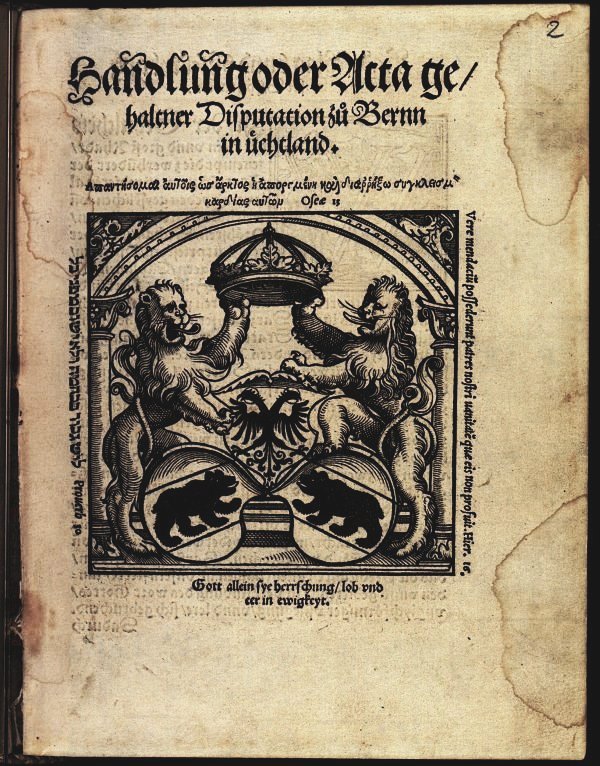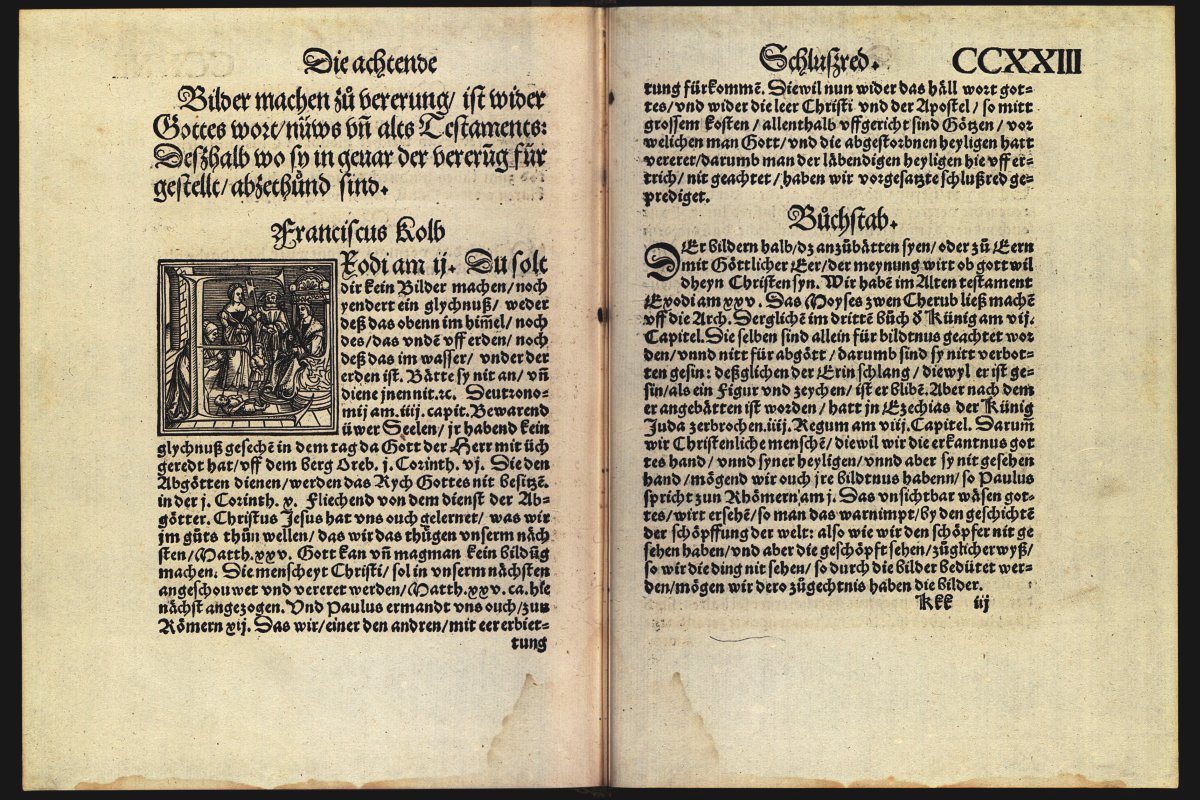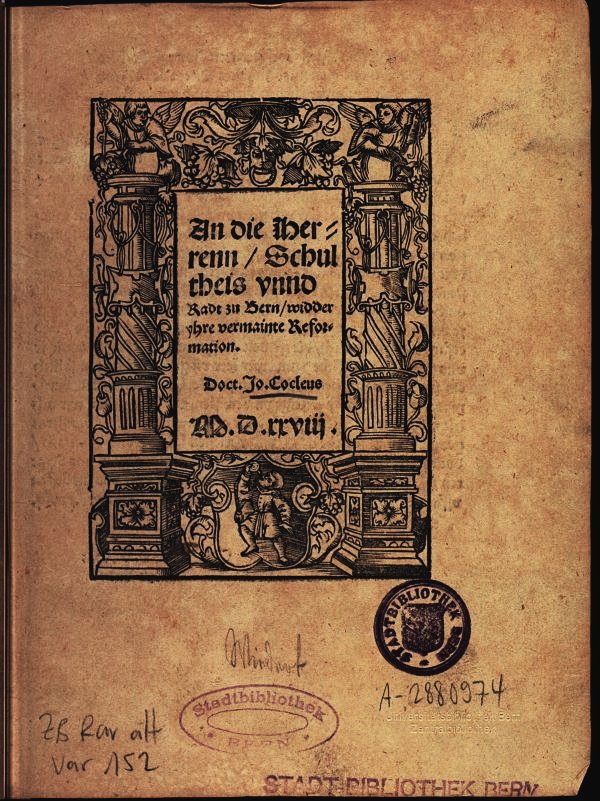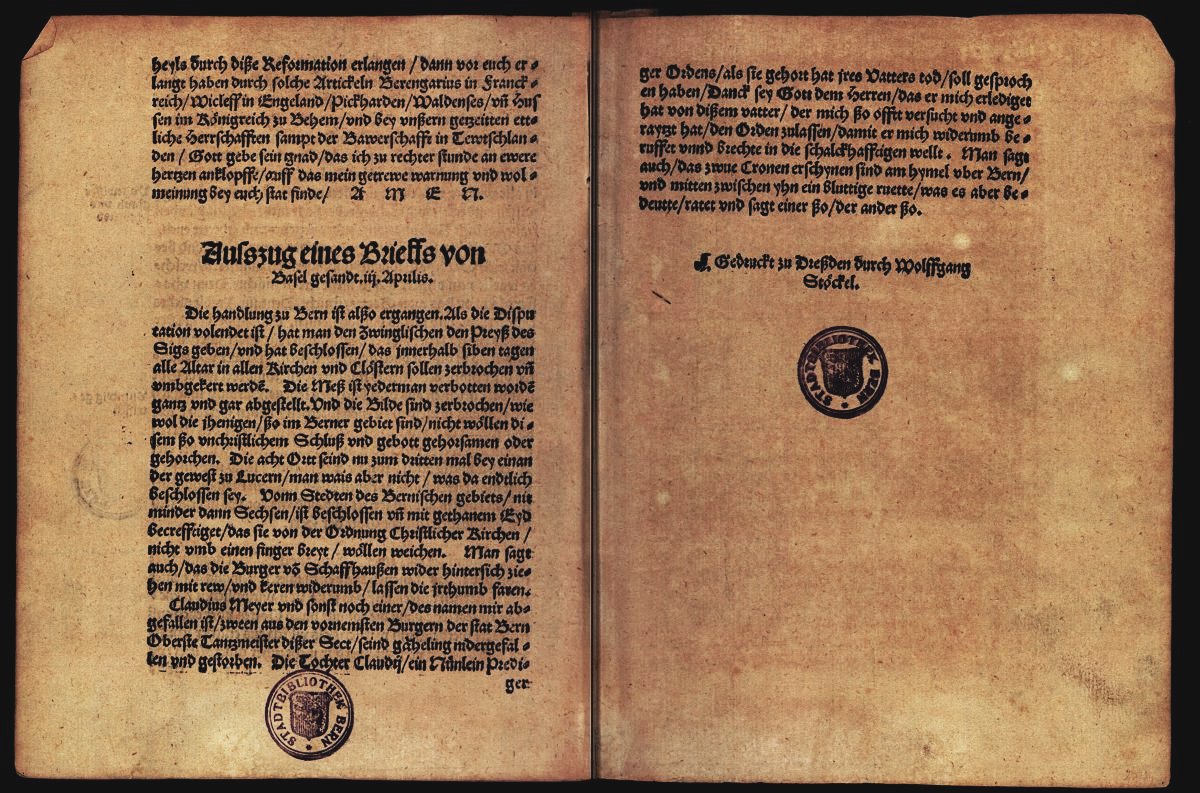Outlook on the Bernese Reformation
In the early 1520s the Reformation had its followers in Bern, too. Resulting from the disputation about faith, a discussion of faith, the Reformed Confession and the new order of service were bindingly introduced at the start of 1528. People of old faith, however, found it difficult to accept the ban of illustrations and the dissolution of monasteries. The Bernese decision was also fought from the outside, because it leveraged the breakthrough of the Reformation in the whole of Switzerland eventually.
The Bernese reformers Franz Kolb und Berchtold Haller phrased ten theses in the autumn of 1527 as a basis for the disputation between 6th and 26th January 1528 in the "Barfüsserkirche". Following these resolutions the Bernese Council ordered abolition of mass and removal of pictures on 27th January. The records of this discussion of faith were printed in Zürich in March (MUE AD 124:2) because there was no book printer in Bern yet. The title page shows the Bernese coat of arms, the so-called "Bernreich". At the beginning of the 8th closing speech by Franz Kolb addressing the ban of pictures an initial carved in wood by Niklaus Manual is displayed which depicts the Solomonic judgement.
Johannes Cochläus, a fierce opponent of Luther and theological adviser to his adversary Cardinal Albrecht from Mainz, published a piece of warning and invective to the “Berner Rat” - the Bernese Council (MUE Rar alt var 152). Therein he condemned the decision of the Bernese Council for the Reformation and criticized the imminent dissolution of monasteries with the dismissal of the monks and nuns into an ordinary life.




